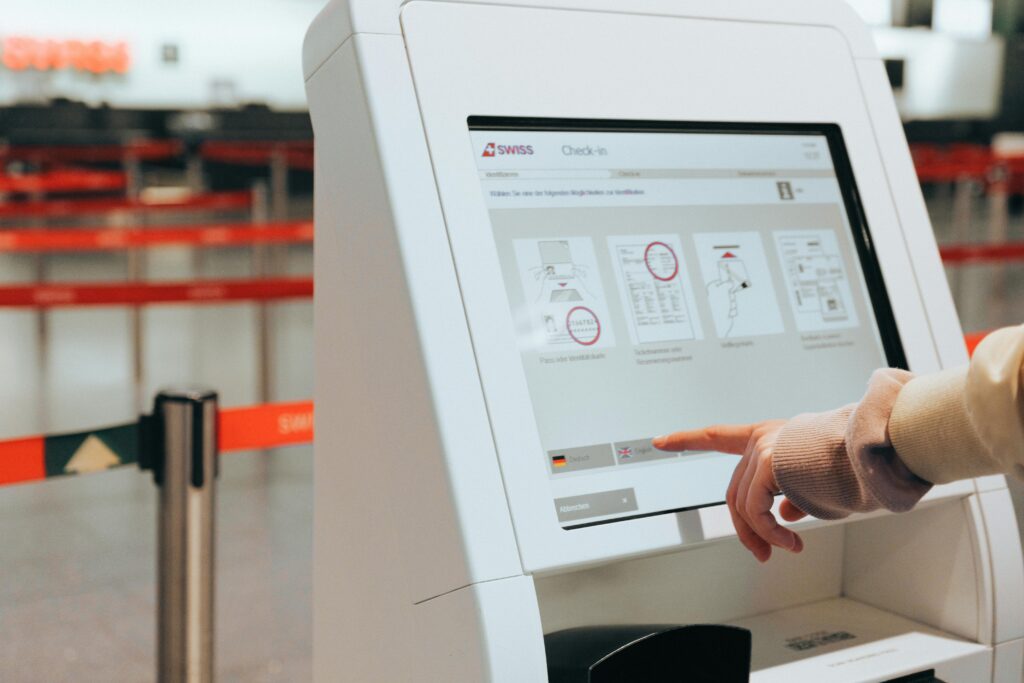Resistive touch sensors have remained a preferred choice for economical touchscreen solutions for decades. It is a simple pressure-activated touch sensor that involves analogue switch technology. The resistive touchscreens are constructed of two transparent conductive coated layers, usually, Indium Tin Oxide (ITO), facing each other. These layers are separated by dielectric spacer dots creating a small air gap. When pressure is applied to the top surface by touching the surface, the two layers come into contact leading to a change in resistance. The controller then detects the change and determines the touch point in both the X and Y plane.
Primarily, it is simple construction and low production cost that contributes to the popularity of resistive touchscreens. There are many other reasons for using resistive touch sensors, however, a few limitations in resistive touchscreens restrict the usage for more demanding applications.
Here are the pros and cons of resistive touchscreens.
Benefits of Resistive Touchscreen
- Besides being simple and economical in construction, resistive touchscreens consume low power. They are immune to EMI and are compatible with a wide range of controllers. Therefore, resistive touchscreens, compared to their counterparts, are easy to incorporate and embed in applications, reducing the development costs significantly.
- Another big reason behind the popularity of resistive touch sensors is durability. Given the surface hardness of 3H and PET construction, Optical Equipment Manufacturers (OEMs) for restaurants and retailers prefer resistive touch solutions for various applications. They are pretty durable for general use. For rugged applications that require higher durability and waterproof solutions, A D Metro provides its patented glass armored ULTRA-Resistive touch screen sensors that combine the characteristics of a durable glass surface with the benefits of a resistive touch screen.
- Being pressure activated, resistive touchscreens allow using bare or gloved fingers, nails or stylus for operations. This feature facilitates completing touch actions simply and easily using a bare finger, gloved finger or stylus. Particularly, in industrial settings, where staff has to work with heavily gloved hands, resistive touchscreens make the process smooth and uninterrupted.
Limitations of Resistive Touchscreen
- The biggest disadvantage with resistive touch panels is single touch point operation. Unlike capacitive touchscreens, it doesn’t allow multi-touch, which may be a limitation for some applications.
- These features lacking in resistive touchscreens are up until lately, unavoidable, especially, in advanced applications that require multi-touch.
Overcoming the Limitations of Resistive Touchscreens
A D Metro has introduced yet another innovative solution in touch screen technology, i.e.Two-Touch 5-Wire Resistive Touch Controller. This is for applications that require resistive touch sensors; but also demand two-touch capability. This controller works with standard 5-wire resistive sensors and delivers a two-touch feature as required by Graphical User Interfaces (GUIs) in applications facing harsh environments that only resistive touch sensors can endure.
The Two-Touch 5-Wire Resistive Touch Controller facilitates fast and smooth touch operations with 100 touch points per second for single touch and 70 touch points per second for two-touch provision. Moreover, the controller also offers HID Plug & Play in Windows and Linux.
Key Features of Two-Touch 5-Wire Resistive Touch Controller
This advanced touch solution by A D Metro offers the following essential features:
- Complete two-touch operation and ideal for pinch, zoom, rotate and drag gestures.
- Fully operational in rain and salt water.
- Offers economical production and simple integration in touch applications.
- Compatible with 5-Wire Resistive and ULTRA-Resistive Touchscreens.



